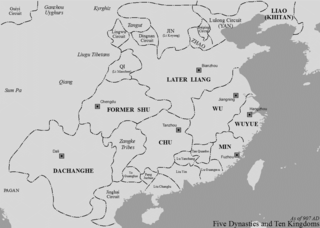 W
WSogdia or Sogdiana was an ancient Iranian civilization that at different times included territory located in present-day Uzbekistan, Tajikistan, Kazakhstan, and Kyrgyzstan, such as Samarkand, Bukhara, Khujand, Panjikent, and Shahrisabz. Sogdiana was also a province of the Achaemenid Empire, eighteenth in the list on the Behistun Inscription of Darius the Great. In the Avesta, Sogdiana is listed as the second best land that the supreme deity Ahura Mazda had created. It comes second, after Airyanem Vaejah, "homeland of the Aryans", in the Zoroastrian book of Vendidad, indicating the importance of this region from ancient times. Sogdiana was first conquered by Cyrus the Great, the founder of the Achaemenid Empire. The region would then be annexed by the Macedonian ruler Alexander the Great in 328 BC. The region would continue to change hands under the Seleucid Empire, Greco-Bactrian Kingdom, Kushan Empire, Hephthalite Empire, and Sasanian Empire.
 W
WAnnam was the southernmost province of Tang China from 679 to 866. Annam is the Vietnamese form of the Chinese name Annan, which means "the Pacified South" or "to pacify the South", a clipped form of the full name, the "Protectorate General to Pacify the South" Chinese: 安南都護府; pinyin: Ānnán Dūhùfǔ; Vietnamese: An Nam đô hộ phủ. In 679, the Annan Protectorate replaced the Jiaozhou Protectorate, also known as Jiaozhi, with its seat situated in Songping County (宋平縣). Annan was renamed to Zhennan for a brief period from 757-760 before reverting to Annan. After coming under attack by Nanzhao in 864, the Annan Protectorate was renamed Jinghai Military Command upon its reconquest by Gao Pian in 866. Today the same area is sometimes known as Tonkin, the "eastern capital" of Đại Việt. Locally, the area is known as Bắc Kỳ (北圻), the "northern area".
 W
WThe Diamond Sūtra is a Mahāyāna (Buddhist) sūtra from the Prajñāpāramitā sutras or 'Perfection of Wisdom' genre. Translated into a variety of languages over a broad geographic range, the Diamond Sūtra is one of the most influential Mahayana sutras in East Asia, and it is particularly prominent within the Chan tradition, along with the Heart Sutra.
 W
WThe Huichang Persecution of Buddhism was initiated by Tang Emperor Wuzong during the Huichang era (841-845). Among its purposes were to appropriate war funds and to cleanse China of foreign influences. As such, the persecution was directed not only towards Buddhism but also towards other religions, such as Zoroastrianism, Nestorian Christianity, and Manicheism.
 W
WThe military history of the Sui and Tang dynasties encompasses the period of Chinese military activity from 581 to 907. Although the Sui dynasty preceded the Tang, it was extremely short lived, ending in 618. The two dynasties share many similar trends and behaviors in terms of military tactics, strategy, and technology. It can therefore be viewed that the Tang continued the Sui tradition, or that the Sui set the precedent for the Tang dynasty.
 W
WThe Tang dynasty or Tang Empire was an imperial dynasty ruling China from 618 to 907, with an interregnum between 690 and 705. It was preceded by the Sui dynasty and followed by the Five Dynasties and Ten Kingdoms period. Historians generally regard the Tang as a high point in Chinese civilization, and a golden age of cosmopolitan culture. Tang territory, acquired through the military campaigns of its early rulers, rivaled that of the Han dynasty.
 W
WTĩnh Hải quân or the Jinghai Military Command, also known as Annam (安南) was a Tang dynasty-polity ruled by Chinese governors, then became a quasi-independent regime ruled by successive Vietnamese warlords and monarchs. It centered around what is now northern Vietnam from 866 to 967 during the late Tang period and lasted to late Five Dynasties and Ten Kingdoms period until the Vietnamese ruler Đinh Bộ Lĩnh eventually established the kingdom of Đại Việt.